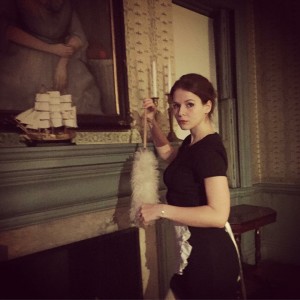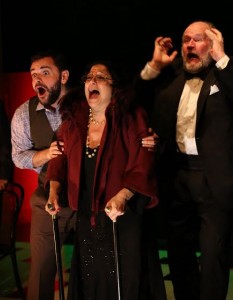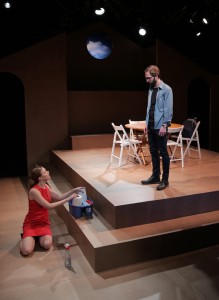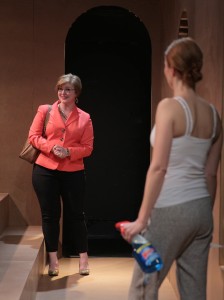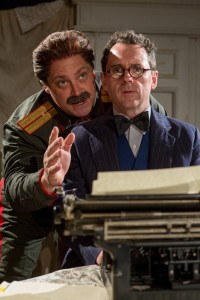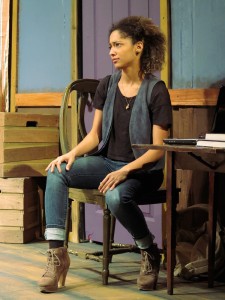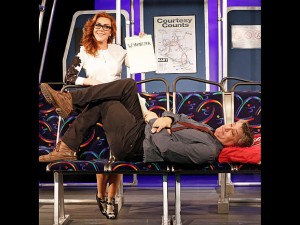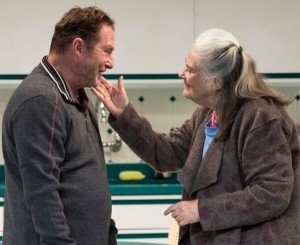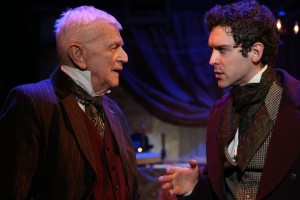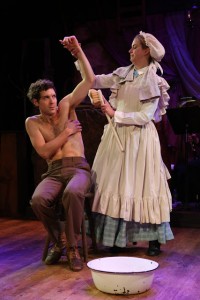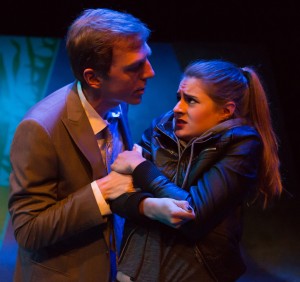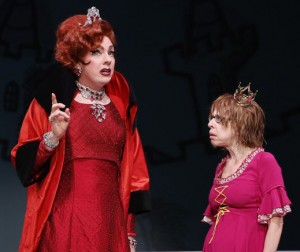“Be careful whom you trust,” a maid whispers warningly into my ear as she swishes past me up a dark stairwell. This servant (played convincingly by Macy Idzakovich) is one of many peripheral characters haunting the halls of the historic Morris-Jumel Mansion in Journey Lab and Deaths Head Theatrical's The Alving Estate—an immersive staging of Henrik Ibsen’s Ghosts. Indeed, ghosts are central to Ibsen’s body of work and this particular production, which explore the foibles of the living, as well as the hauntings of the familial past. Though The Alving Estate experience is not without its aesthetic shortcomings, it succeeds in convincing audiences that there are deep secrets hidden within the walls of this eerie mansion.
As my experience with Idzakovich as the maid demonstrates, the participatory nature of Journey Lab's aesthetic infuses Ibsen’s oeuvre with extra sex and intrigue. Journey Lab’s take on Ghosts, like many immersive works today, puts the audience at the center of the experience, giving participants the opportunity to choose where to go (and who to follow) within the mansion. This production choice comes at the expense of narrative cohesion, so if you’re looking for something more experiential than narrative, this is your type of production; on the other hand, if you’re interested in piecing together a storyline, you should read or familiarize yourself with Ibsen’s play before indulging in The Alving Estate.
Upon arriving to the mansion, you are given a job description and prepped for an interview for employment at the estate. After socializing over drinks with other “applicants” in the charming and dimly lit carriage house, audience members are selected at random to begin exploring the mansion. The Morris-Jumel Mansion is itself a star character in this production; its creaks, draughts, and creepy oil portraits all add unique charm and mystique to the experience. Unfortunately, there are some informational plaques visible in parts of the mansion, which distract from the time and place of the immersive experience.
While the site of this performance provides a delightful opportunity to explore an old gem of upper Manhattan, there are other aspects of this production that are less unique. Journey Lab takes a great deal of cues from British immersive theater pioneers Punchdrunk and their long running production Sleep No More, which has been running in Chelsea since 2011. The resemblances between this production and the Punchdrunk aesthetic may distract audience members familiar with the Sleep No More empire. Eerie music, intense moments of eye contact with the actors, and choreography reminiscent of contact improvisation are all pulled directly from the existing repertoire. Even some of the costumes and props—backless ball gowns, old photographs, costume jewelry—seem to be hand-me-downs from The Alving Estate’s immersive predecessor.
Though The Alving Estate is haunted by an existing aesthetic, it still manages to showcase the raw talent and latent creativity of Journey Lab, an immersive company to look out for in the future. Surely, Punchdrunk provides a worthy aesthetic role model for aspiring immersive theater makers, but I suspect that the talent at Journey Lab could—and should—move beyond this copycat approach to become innovators in this exciting contemporary form.
The Alving Estate runs Thursday through Saturday at 7 p.m. until Feb. 6 at the Morris-Jumel Mansion (65 Jumel Terrace) in Washington Heights. Tickets range from $20-$50 and can be purchased by calling or visiting http://journeylab.org/experiences/.






